1. Agile Scrum
1.1. Is an alternative agile framework. It can be used instead or combined with Kanban.
1.1.1. Illustration Mindmap of Agile Scrum
2. Kanban Board
2.1. A visualization of a team’s workflows.
2.1.1. Consitsts of columns, which represent different workflow stages. Cards represent tasks. During the process, the cards move through the various stages.
2.2. An example of a Kanban board software tool by MeisterTask
2.3. Example
3. Kanban vs. Scrum
3.1. Cadence
3.1.1. Continuous flow
3.1.2. Regular fixed length sprints
3.2. Release methodology
3.2.1. Continuous delivery or at the team's discretion
3.2.2. At the end of each sprint if approved by the product owner
3.3. Roles
3.3.1. No existing roles. Some teams enlist the help of an agile coach.
3.3.2. Product owner, scrum master, development team
3.4. Key metrics
3.4.1. Cycle time
3.4.2. Velocity
3.5. Change philosophy
3.5.1. Change can happen at any time
3.5.2. Teams should strive to not make changes to the sprint forecast during the sprint. Doing so compromises learnings around estimation.
4. Lean Management
4.1. Seeks to eliminate any waste of time, effort or money by identifying each step in a business process and then revising or cutting out steps that do not create value.
4.2. Guiding principles for lean management
4.2.1. Defining value from the standpoint of the end customer.
4.2.2. Identifying each step in a business process and eliminating those steps that do not create value.
4.2.3. Making the value-creating steps occur in tight sequence.
4.2.4. Repeating the first three steps on a continuous basis until all waste has been eliminated.
4.3. The 5 Basic Lean Principles (create a stable workflow based on actual customer’s demand)
4.3.1. Identify Value
4.3.2. Value Stream Mapping
4.3.3. Create Continuous Workflow
4.3.4. Create a Pull System
4.3.5. Continuous Improvement
4.4. Benefits of Lean Management
4.4.1. Focus
4.4.1.1. By applying Lean, you will be able to reduce waste activities. Therefore, your work force will be focused on activities that bring value.
4.4.2. Improving productivity & efficiency
4.4.2.1. When employees are focused on delivering value, they will be more productive and efficient, because they won’t be distracted by unclear tasks.
4.4.3. Smarter process (pull system)
4.4.3.1. By establishing a pull system, you will able to deliver work only if there is actual demand. Which leads to the next one.
4.4.4. Better use of resources
4.4.4.1. When your production is based on actual demand, you will be able to use only as many resources as needed.
5. Kanban Definition
5.1. Kanban is a popular framework used to implement agile software development. It requires real-time communication of capacity and full transparency of work.
5.2. The etymology of the word "kanban"
5.2.1. Kanban is Japanese for “visual signal” or “card.” Toyota line-workers used a kanban (i.e., an actual card) to signal steps in their manufacturing process. The system’s highly visual nature allowed teams to communicate more easily on what work needed to be done and when.
6. Kanban Software
6.1. Helps teams visualize work and workflows.
6.2. Common Features of Kanban Software
6.2.1. Kanban boards
6.2.2. Work-in-progress (WIP) limits
6.2.3. Cumulative flow diagrams (CFDs)
6.2.4. Lead and cycle time diagrams
6.3. Examples
6.3.1. MeisterTask
6.3.2. Project Insight
6.3.3. Smartsheet
6.3.4. Workfront
6.3.5. Wrike
6.3.6. Sitetracker
6.3.7. Targetprocess
6.3.8. SmartCore
6.3.9. Ravetree
6.3.10. Trello
6.3.11. Asana
6.3.12. JIRA
6.3.13. monday.com
6.3.14. Hubstaff
6.3.15. GitLab
6.3.16. CaseCamp
6.3.17. Zenkit
7. How Kanban Works
7.1. Visualize Work
7.1.1. Communication and collaboration increases
7.2. Limit Work in Process
7.2.1. Unnecessary working time is reduced
7.3. Focus on Flow
7.3.1. Flow of work improves
7.4. Continuous Improvement
7.4.1. The team’s effectiveness improves
